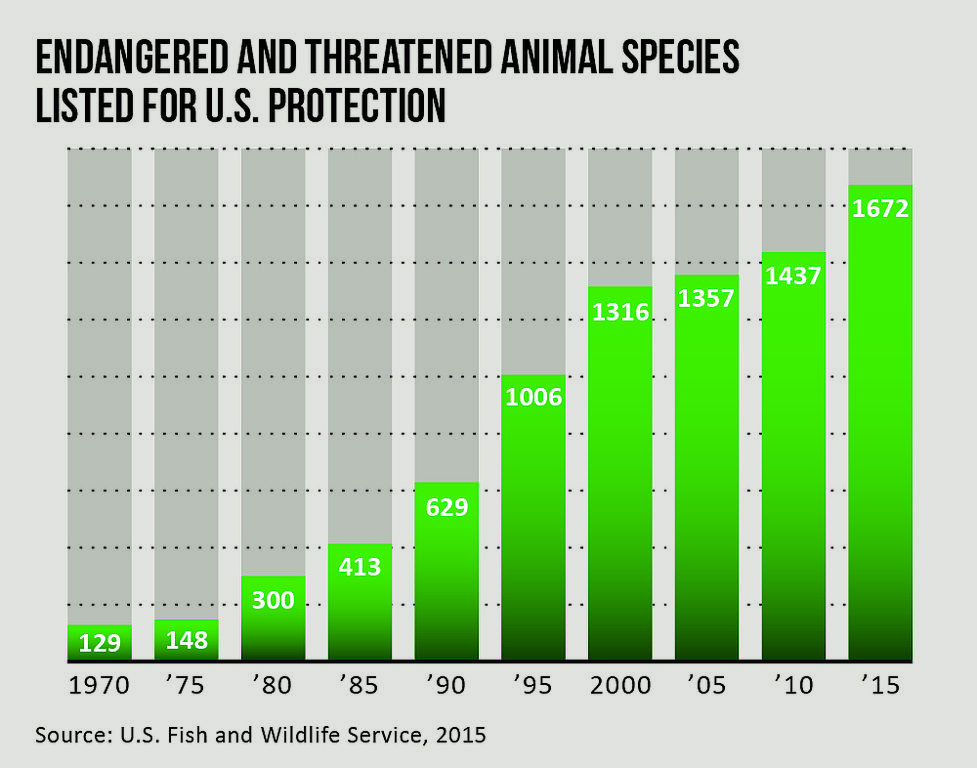Environment — Air, Water, Chemicals, Wildlife, and Vapor Are Key Issues
Publication | 01.19.16
The coming year promises to be especially active for environmental regulation and related litigation.

For starters, in 2015 the Environmental Protection Agency (EPA) issued two regulations, under separate environmental statutes, that could profoundly affect business if they are upheld by the courts: the Clean Power Plan, issued under the Clean Air Act, and the Waters of the United States Rule, issued under the Clean Water Act.
Published in the Federal Register in October 2015, the Clean Power Plan sets the ambitious goal of achieving a 32 percent cut in carbon dioxide emissions from existing U.S. power plants by 2030, compared to 2005 levels. To reach this goal, EPA has adopted an aggressive regulation that tests the boundaries of its statutory authority, prompting numerous judicial challenges. These challenges, to be heard initially by the U.S. Court of Appeals for the D.C. Circuit, are expected to consume much of 2016. If the Supreme Court takes the case up later, it could consume much of 2017 as well.
The judicial challenges by themselves do not affect the rule’s ambitious compliance deadlines, the first of which falls in September 2016, when initial submissions from the states regarding their implementation plans are due. “Absent a judicial stay, states will be obligated to begin preparing their plans for implementing the plan,” says Tom Lorenzen, a partner at Crowell & Moring and former assistant chief of the Department of Justice’s Environment & Natural Resources Division. “Utilities cannot sit idly by and assume that this rule will simply go away. They need to be engaged with the states in which they operate to consider how they will comply if the rule is upheld in whole or in part.”
A similar court fight is ensuing over the Clean Water Rule issued by the EPA and the U.S. Army Corps of Engineers last May. This new rule expands the definition of “waters of the United States” governed by the Clean Water Act, and thereby substantially expands the environmental regulatory jurisdiction of the federal government.
NEW SCRUTINY FOR CHEMICALS
As 2015 came to a close, Congress was also poised to pass new legislation that would overhaul the manner in which chemicals, and products made from chemicals, are regulated in the U.S. The legislation would update the Toxic Substances Control Act (TSCA) for the first time since 1976, requiring the EPA to review all chemicals that are currently in commerce in the U.S. to assess their safety and, if appropriate, impose restrictions or bans on their use. In addition, manufacturers and processors of chemical products will be subject to new reporting requirements, and, if the EPA determines that available data are insufficient for evaluating the safety of a chemical, the law will give the EPA expanded power to require that manufacturers and processors conduct studies to generate that data.
“The law would be much more of a ‘sea change’ for existing chemicals than for new chemicals, which already undergo rigorous testing,” says Warren Lehrenbaum, a Crowell & Moring partner. “With the proposed changes to TSCA, chemicals that have been in use for decades will undergo a much higher level of scrutiny.”
Meanwhile, the EPA continues to push the boundaries of its existing authorities under TSCA. For example, in 2016, the EPA will be engaged in rulemaking to impose new reporting requirements on manufacturers and processors of nanoscale materials, and it is expected to issue administrative orders to require endocrine disruptor testing on dozens of new chemicals.
EXPANDING WILDLIFE PROTECTION
Federal authorization for “take” of protected wildlife—generally defined as disturbing or killing an animal—is another issue of growing significance. As 2016 unfolds, two statutes in particular may play an increasingly large role in land development projects.
First, the likelihood of increased listings under the Endangered Species Act (ESA) will impose new requirements, including permitting and consultation obligations, on areas of the country that have had few if any listed species. “The expectation is that there will be several hundred new listing decisions over the next few years, some involving species with ranges throughout the country. No region will be immune from the effects of these new listings,” says Lehrenbaum.
Second, the U.S. Fish and Wildlife Service (FWS) has issued a notice of preliminary analysis that may precede the promulgation of a new permitting scheme under the Migratory Bird Treaty Act (MBTA) for “incidental take.” Currently, there is no method to obtain a permit for incidental take—unintentional take caused by otherwise legal activity—under the MBTA, even though the agency asserts it has the authority to pursue criminal sanctions against private parties that incidentally take migratory birds.
“This puts private parties whose projects might incidentally take migratory birds in a position of legal uncertainty,” says Lehrenbaum. “The new permitting scheme, if issued, could resolve some of that concern, albeit by imposing an additional regulatory burden.” The Supreme Court also may resolve some of the uncertainty, as a split in the federal circuits over whether even unintentional bird deaths trigger criminal liability seems headed for decision there in 2016, he adds.
RISING VAPOR CONCERNS
In June 2015, the EPA issued two new sets of guidelines regarding vapor intrusion, the migration of hazardous vapors from contaminated soil or groundwater through the subsurface and into indoor air in nearby buildings. One set of guidelines is for vapor intrusion risks attributable to all classes of volatile chemicals; the other is specific to petroleum vapors associated with leaking underground storage tanks. The broader guidance will have the biggest impact.
“The EPA has not traditionally regulated indoor air, but vapor intrusion provides a way for the agency to address this based on existing regulations for soil and groundwater contamination,” says Jennifer Giblin, senior counsel with Crowell & Moring. “It becomes another issue to consider in the cleanup of any site where hazardous chemicals have been used.”
One major concern for industry as these new guidelines are interpreted and applied is that site remediations already deemed completed by regulators may need to be reopened to ensure compliance with the new guidelines, Giblin adds.
AN EMERGING CONCERN
An emerging, high-profile, and potentially costly area of concern is the focus on potential manipulation of regulatory compliance testing and other confirmatory procedures. These procedures may be computerized, but the procedures are more likely a combination of testing equipment, software, and human interaction. Given recent developments, regulatory agencies are likely to view this as a new, “target-rich” environment, causing them to increase inspections of facilities and, more particularly, compliance monitoring and reporting mechanisms and procedures. With the potential of significant civil and criminal penalties, in-house counsel need to be prepared to respond to questions and challenges in this area.

[The number of animal species protected under the Endangered Species Act continues to rise. As part of a multidistrict litigation settlement in 2011 with WildEarth Guardians, the U.S. Fish and Wildlife Service is required to review some 250 candidate species between 2013 and 2018 to determine if they should be added to the federal protection list.]
[PDF Download: 2016
| |
[Web Index: 2016 Regulatory
|
Contacts
Insights
Publication | 11.24.25
Litigation Funders Looking to Invest in Law Firms Face Hurdles
Publication | 11.19.25
Who Can Fix It? Antitrust, IP Rights, and the Right to Repair
Publication | 11.14.25
Three Steps Tech Companies Can Take Today To Prepare To Ride A Blue Wave In 2026




